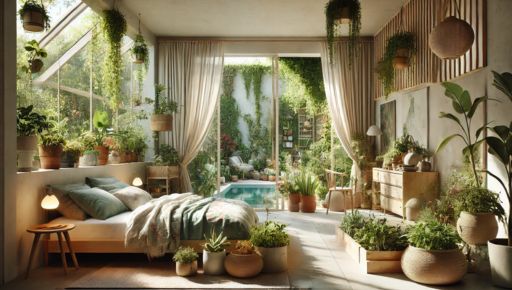When it comes to creating a functional and aesthetically pleasing living space, the furniture layout is crucial. A well-planned layout can make a small room feel more spacious and a large room more inviting. Whether you’re dealing with a cozy apartment or a spacious home, understanding how to arrange furniture according to room size is key to achieving the perfect look and feel. This guide will explore the best furniture layouts for different room sizes, helping you maximize your space and enhance your home’s style.
Small Rooms: Maximizing Space and Functionality
1. Compact Living Rooms
For small living rooms, the goal is to maximize both space and functionality. Start by choosing furniture that is proportionate to the room size. Opt for a streamlined sofa with thin arms and legs to create a sense of openness. Consider multi-functional furniture, such as a coffee table with storage or a sofa bed for additional sleeping space.
- Layout Tip: Place the sofa against the longest wall to open up the central area. Use a small, round rug to define the seating area without overwhelming the space. Avoid placing furniture in the center of the room to keep traffic flow clear.
2. Tiny Bedrooms
In a small bedroom, the bed is the focal point, so its placement is crucial. Position the bed against the longest wall to make the room feel more spacious. Choose a bed with built-in storage or a lofted design to free up floor space for other furniture.
- Layout Tip: Use vertical space by installing shelves above the bed or on the walls. Keep nightstands small and avoid heavy, bulky furniture. Light-colored bedding and walls can also make the room appear larger.
3. Small Dining Areas
For compact dining areas, a round table can be an excellent choice as it maximizes seating without taking up too much space. Consider a wall-mounted drop-leaf table or a compact bistro set for a flexible dining solution.
- Layout Tip: Place the table near a window or light source to create a more inviting atmosphere. Use wall-mounted shelves or a slim console to store dining essentials without cluttering the space.
Medium-Sized Rooms: Balancing Comfort and Style
1. Average-Sized Living Rooms
In a medium-sized living room, you have more flexibility with furniture arrangements. Start by creating distinct zones for different activities, such as a seating area, a reading nook, and a media area. Use area rugs to define these zones.
- Layout Tip: Arrange the sofa and chairs to create a conversation area. Consider placing a media console on the wall opposite the sofa. Use a large coffee table to anchor the seating area and provide additional surface space.
2. Moderate Bedrooms
For medium-sized bedrooms, you can afford a bit more variety in your furniture choices. Position the bed as the focal point by placing it in the center of the longest wall. Flank the bed with matching nightstands and add a dresser or a wardrobe for additional storage.
- Layout Tip: Create balance by using symmetrical arrangements for nightstands and lamps. A bench or an upholstered ottoman at the foot of the bed can add both style and function.
3. Medium Dining Rooms
In a moderate dining room, a rectangular or oval table works well. Ensure there’s enough space around the table for comfortable movement. Consider using a buffet or sideboard for extra storage and serving space.
- Layout Tip: Position the table centrally in the room, with enough clearance on all sides. Use a statement light fixture above the table to create a focal point and enhance the dining experience.
Large Rooms: Creating Cohesive and Functional Spaces
1. Spacious Living Rooms
With a large living room, you have the opportunity to create multiple functional areas. Use large, comfortable furniture pieces and arrange them to define different zones, such as a conversation area, a reading nook, and an entertainment zone.
- Layout Tip: Use area rugs to separate different zones and help define each area. Position the sofa centrally to create a natural focal point, and add chairs and tables to complement the arrangement. Incorporate large-scale artwork or a feature wall to enhance the room’s visual appeal.
2. Large Bedrooms
In a spacious bedroom, you can experiment with various furniture arrangements. Position the bed centrally on a prominent wall, and use a large headboard to create a focal point. Add a seating area, such as an armchair or a small sofa, for a touch of luxury.
- Layout Tip: Use a combination of large and small furniture pieces to fill the space without overcrowding. Incorporate a dresser, a walk-in closet, or an additional storage unit for a well-organized space.
3. Expansive Dining Rooms
A large dining room offers ample space for a grand dining table. Consider a long, rectangular table that accommodates more guests. Add a buffet or china cabinet along one wall for storage and display.
- Layout Tip: Create a sense of balance by placing the table centrally and using a large area rug underneath. Incorporate additional seating, such as a bench or extra chairs, and add a large chandelier or pendant light for a dramatic effect.
Tips for All Room Sizes
1. Consider Traffic Flow
No matter the room size, ensure that the layout allows for easy movement. Avoid placing furniture in pathways and keep walkways clear to prevent a cluttered look.
2. Use Vertical Space
In smaller rooms, utilize vertical space by adding shelves, tall bookcases, or wall-mounted storage. This helps to keep the floor area clear and adds functionality.
3. Maintain Proportionality
Select furniture that is proportional to the room size. Large rooms can handle oversized furniture, while smaller rooms benefit from more streamlined pieces.
4. Incorporate Lighting
Proper lighting enhances the room’s ambiance. Use a mix of ambient, task, and accent lighting to create a well-lit and inviting space.
5. Personalize with Accessories
Add personality to your space with accessories such as rugs, curtains, and artwork. These elements can help to tie the room together and reflect your personal style.
Conclusion
Choosing the best furniture layout for your room size involves understanding the space you have and how you want to use it. Whether you’re working with a small, medium, or large room, applying these layout principles will help you create a functional and stylish living area. By balancing furniture size, traffic flow, and personal preferences, you can achieve a well-designed space that enhances both comfort and visual appeal.




